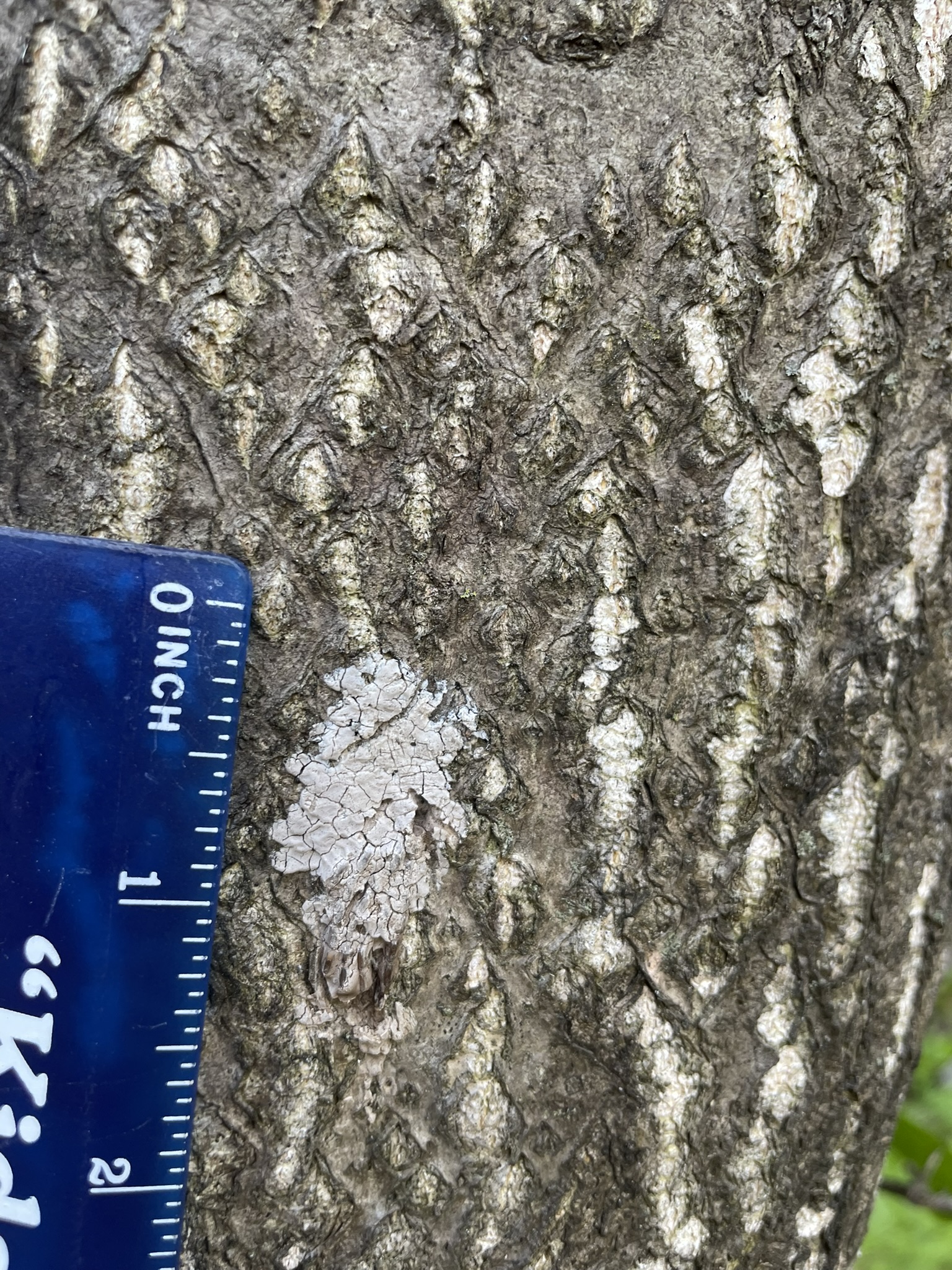A new invasive insect is trying to make Georgia its home - and the public's help is critical to tracking the invasion, according to University of Georgia researchers.
The spotted lanternfly, an insect native to Asia, was first detected in Pennsylvania in 2014. Since then, lanternflies steadily spread across the eastern United States and has now been confirmed in 19 states.
Last fall, the Georgia Department of Agriculture announced Georgia's first detection of this insect in Fulton County after a member of the public observed a suspicious-looking insect and reported it to EDDMapS, the state's official tool for lanternfly sightings.
So far, Fulton County is the only confirmed location of the invasive pest in Georgia.

The adult spotted lanternfly is about an inch long with grayish-brown front wings with black spots and dramatic hindwings with cream, brown and red patches. (Photo by Elizabeth McCarty)
Why is the lanternfly such a threat?
Every sighting gives state and federal agencies vital information to guide response efforts.
With its striking bright spots and red patches, the spotted lanternfly might look like just another eye-catching insect. But don't be fooled - it's a serious threat.
The spotted lanternfly feeds on more than 70 plant species, including economically important hardwood trees, roses, hops, grapevines and stone fruits such as peaches, plums and cherries.
It also excretes a sugary fluid called honeydew that can coat vegetation and surfaces located below host plants. This sticky residue attracts black sooty mold growth, creating an unsightly mess that's difficult to clean. The impact on Georgia's agriculture, forestry and nursery industries could be significant, posing a serious economic burden across multiple sectors.

Spotted lanternflies overwinter as egg masses that resemble grayish, dried mud as shown here. (Photo by Elizabeth McCarty)
What does a spotted lanternfly look like?
Recognizing what the lanternfly looks like and knowing where and when to spot each life stage is key to detecting and reporting this pest, researchers said.
The insects overwinter as egg masses that resemble grayish, dried mud on tree trunks and branches higher in the tree, and on outdoor surfaces like patio furniture. Egg masses are present from fall through spring and can easily be transported long distances if attached items are moved.
That's why it's important to carefully inspect outdoor items before relocating them.

The spotted lanternfly nymph develops vivid red markings as they mature. (Photo by Elizabeth McCarty)
In the spring, the eggs hatch into black-and-white spotted nymphs about 1/4 to 1/2 inch long. As they mature, the nymphs develop large, vivid red patches on their back and are about 3/4 inches.
Adult lanternflies are about an inch long with grayish-brown front wings with black spots and dramatic hindwings with cream, brown and red patches.
Keep an eye out for adult lanternflies through the summer
The first 2025 sightings of spotted lanternfly nymphs in Georgia were reported in April. From May through mid-June, older nymphs with red patches were observed. The first adult sightings occurred in mid-June, and last fall's adults were seen as late as November.
That means it's adult season now, so experts are asking people to keep watch through the summer.
Georgia is the southernmost state with confirmed lanternfly populations. And the pest hasn't been here long enough for scientists to fully understand its lifecycle in this region. That makes public reports especially valuable for tracking seasonal patterns and range expansion, researchers said.
The insects congregate in groups, especially lower down on plant surfaces. They are not strong flyers. Adult lanternflies may be seen hopping or flying clumsily around.
Lanternflies preferred hosts include tree-of-heaven, grapevines
The lanternfly's preferred host is the tree-of-heaven.
This fast-growing invasive tree thrives along roadsides, railways and other areas with recently disturbed soil, like construction sites. It can soar up to 90 feet tall, with large compound leaves - often 1 to 4 feet long - resembling those of sumac or black walnut.
Crush a leaf and you'll smell something like burnt peanut butter, an easy clue to help identify it.
Grapevines, both wild and cultivated, are also a preferred food source for SLF.
What do you do if you find a spotted lanternfly?
If you spot a lanternfly, researchers ask that you snap a clear picture, smash the bug and report the sighting through EDDMapS. Areas near Fulton County remain at highest risk.
Every public report helps researchers and agencies track this invasive insect's spread.
To learn more, visit the GDA and Georgia Invasive Species Task Force websites, or reach out to your local University of Georgia county agent for assistance.






